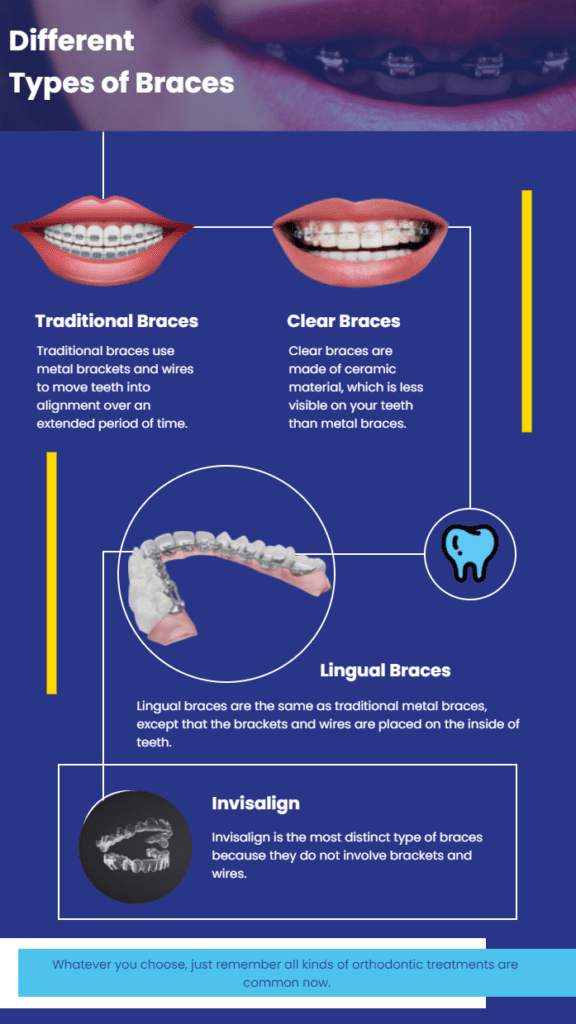Your Overview to Cumming Invisalign: Straightening Teeth with Style and Convenience
Wiki Article
Comprehensive Overview to Orthodontics Procedures for Correcting Dental Imbalances
Comprehending the complexities of each treatment, including their devices, benefits, and prospective drawbacks, is important in making informed decisions about one's orthodontic therapy. As we navigate with the extensive overview to orthodontic treatments for correcting oral misalignments, the elaborate information of each technique will unfold, shedding light on the path toward a functional and unified oral positioning.Orthodontic Procedures Summary

Along with clear aligners and typical dental braces, orthodontists may likewise advise other interventions like headgear, palatal expanders, or retainers to attend to certain positioning problems (cumming aligners). These procedures are tailored per person's special requirements and might involve a combination of therapies to attain the wanted results. Regular adjustments and tracking are crucial parts of orthodontic therapy to guarantee development is on track and to make any kind of required adjustments along the road. By undergoing orthodontic treatments, clients can not only accomplish a straighter grin but additionally boost their overall dental wellness and function.
Traditional Braces: How They Function
When taking into consideration orthodontic treatments for dental imbalances, typical dental braces stand out as a reliable technique for remedying teeth placing. Standard dental braces are composed of brackets, cables, and bands that function together to use continuous pressure on the teeth, progressively relocating them right into the wanted positioning.
As stress is applied to the teeth with the dental braces, the bone surrounding the teeth is reshaped to sustain the brand-new tooth positions. People will require regular adjustments at the orthodontist's workplace to make certain the dental braces continue to use the appropriate stress for effective teeth motion.
Invisible Aligners: Benefits And Drawbacks
Unnoticeable aligners provide a very discreet and convenient alternative to traditional braces for dealing with oral misalignments. These clear, customized trays are practically unnoticeable when used, making them an attractive option for people seeking an extra visually pleasing orthodontic therapy. Among the main advantages of invisible aligners is their removability, permitting for less complicated upkeep of dental health compared to traditional braces. People can remove the aligners before consuming or brushing their teeth, minimizing the threat of food getting embeded the device and simplifying the cleaning process.
Surgical Orthodontic Options
Surgical interventions in orthodontics present practical choices for addressing complex oral imbalances that might not be efficiently solved through standard orthodontic treatments. While unseen aligners and typical right here dental braces can fix many orthodontic issues, specific instances require surgical intervention to attain optimal outcomes. Surgical orthodontic options are generally advised for severe malocclusions, significant jaw discrepancies, and instances where the underlying bone framework requires alteration to achieve appropriate placement.One common surgical orthodontic treatment is orthognathic surgical procedure, which includes rearranging the jaws to correct useful problems such as trouble eating or speaking. This surgical procedure is often done in cooperation with an orthodontist who assists straighten the teeth before and after the procedure. Surgical orthodontics may additionally entail procedures to reveal impacted teeth, remove excess periodontal tissue, or reshape the jawbone to develop an extra harmonious facial account.
Prior to considering medical orthodontic choices, patients undertake a comprehensive evaluation to determine the necessity and possible benefits of such interventions. cumming invisalign. While surgery might seem complicated, it can dramatically enhance both the function and aesthetics of the smile in cases where conventional orthodontic therapies drop short
Retainers and Post-Treatment Care

Post-treatment treatment involves complying with the orthodontist's directions diligently. This might consist of proper dental health practices, participating in follow-up visits, and putting on the retainers as suggested. Failure to comply with post-treatment treatment instructions can cause regression, where the teeth slowly relocate back in the direction of their initial positions. Constant retainer wear, excellent dental health, and normal oral check-ups are necessary for maintaining the results attained with orthodontic surgical procedure and making sure the long-lasting security of the fixed oral alignment.
Final Thought
In verdict, orthodontic procedures use various alternatives for fixing oral imbalances. Surgical orthodontic alternatives are readily available for much more serious imbalances. On the whole, orthodontic treatments can successfully boost dental wellness and aesthetic look.As we navigate via the thorough guide to orthodontic treatments for remedying dental imbalances, the intricate details of each technique will unravel, losing light on the path toward a useful and unified dental positioning. - invisalign
One of the most typical orthodontic treatments is the use of braces, which consist of metal brackets and cables that use mild stress to slowly change teeth into the wanted placement.When taking into consideration orthodontic therapies for oral imbalances, traditional braces stand out as a tried and true method for correcting teeth positioning. Furthermore, undetectable aligners might not be appropriate for intricate orthodontic concerns that require more substantial teeth motion, as they are generally advised for moderate to modest cases. Retainers are tailor-made orthodontic tools created to hold teeth in their remedied positions after the conclusion of orthodontic treatment.
Report this wiki page